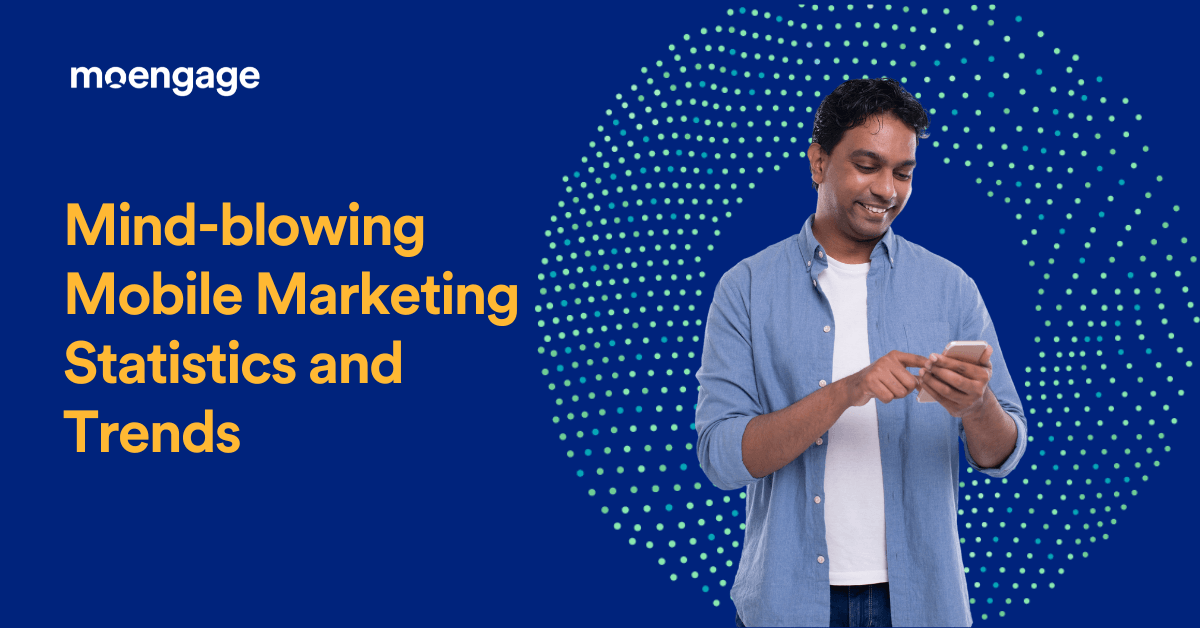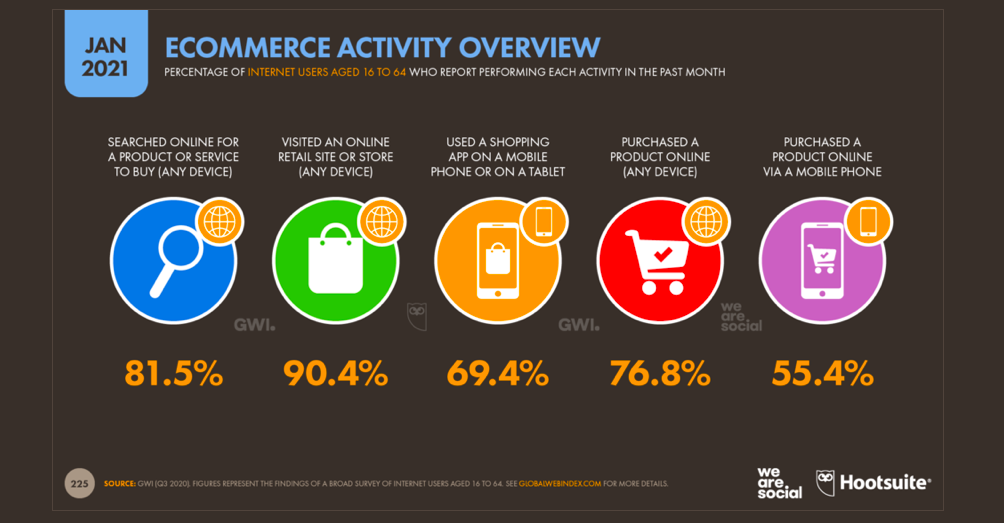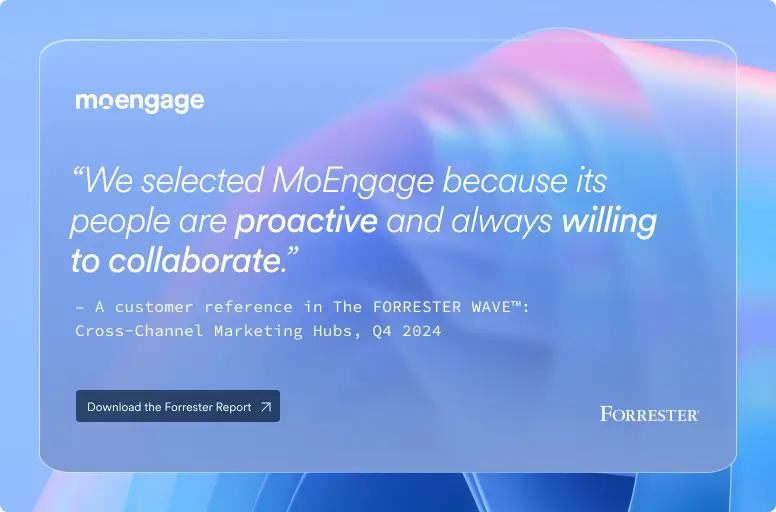51 Mind-blowing Mobile Marketing Statistics and Trends for 2023

Mobile marketing has revolutionized how consumers interact with a brand in the past few years. Whether it is shopping, entertainment, or managing work – our smartphones have become integral parts of our lives. Unsurprisingly, most consumers prefer to browse on their mobile devices, and statistics reveal that the mobile marketing trend will only grow. Besides, marketing on mobile is also cost-effective, more personalized, bears viral potential, and results in better ROI.
Mobile Marketing Statistics That Will Astound You!
Yes – the figures you’re going to see below are pretty insane. Billions of mobile customers, tremendous engagement potential, and significantly high ROI – mobile marketing is the real game-changer for brands.
Top Mobile Marketing Statistics You Cannot Ignore
While you will find hundreds of mobile marketing statistics online, we have made an effort to compile the most relevant data for you from multiple sources. Let’s dive in:
General Mobile Statistics
1. The latest data from GSMA Intelligence indicates there are 5.22 billion unique mobile phone customers today.
2. Unique mobile customers globally are growing at a rate of 1.8 percent per year.
3. In 2020, the amount of money spent on online consumer goods exceeded US$2.4 trillion. This is more than 25 percent increase compared to the 2019 level. A large part of this online spending is attributable to mobile. For instance, GWI data shows that 77 percent of the world’s internet customers buy something online every month, and more consumers purchase via mobile devices than desktops or laptops.

4. The average time spent on mobile increased significantly in 2020. Data from App Annie shows that global Android customers spend more than 4 hours daily using their phones. This adds to 3.5 trillion cumulative hours in the past 12 months.
5. According to GWI, mobile phones account for 53% of the time spent online, with 9 out of 10 customers accessing the internet via a smartphone.
6. The same report indicates increased mobile usage, with the typical global internet customer spending 3 hours and 39 minutes daily using the internet on their mobile phone. In comparison, customers spent on average 3 hours and 24 minutes per day watching television. However, many customers now prefer watching “TV” content via streaming apps on mobile.
7. The social distancing forced by the pandemic and the convenience of online shopping led consumers to migrate more of their physical needs onto mobile, with mobile spending hitting new heights at $143 billion at 20% growth YoY.
8. 35% of consumers who searched for a product or service on their phone spent more than expected in the store.
9. If you’re a fan of social media marketing, you’d find it very interesting that about 81% of active Facebook customers access social networks only using their smartphones.
Customer Behavior and Mobile Marketing
[Source – Think With Google]
10. Mobile-optimized websites and apps are integral to your digital presence. Customers have shown a clear preference for mobile commerce and likely to return to sites optimized for mobile. Mobile customers also prefer swift and personalized interactions, with 63% of smartphone customers more likely to purchase from companies whose mobile sites or apps offer relevant recommendations on products they may be interested in.
11. Introducing a loyalty program for your consumers can boost engagement on mobile. As per data, 51% of smartphone customers are more likely to use a company or brand’s mobile app when browsing or to shop on a smartphone because they can get rewards or points.
12. Personalization is a clear winner on mobile. 58% of smartphone customers feel more favorable toward companies whose mobile sites or apps remember who they are and their past behavior.
13. Convenience is critical. 77% of smartphone shoppers are more likely to purchase from companies whose mobile sites or apps allow them to make purchases quickly.
Mobile Advertising Trends
14. According to Statista, global advertising will hit $280 billion by 2022. That’s almost a 47% increase since 2019, which is phenomenal.
15. Wondering what consumers do once they see an ad on their smartphone? According to Google data, over 50% of the consumers:
- perform a Google search and/or buy the product in a store
- send a text about it
- directly visit the website to purchase the product
16. Smartphone ads have a higher conversion rate than online ads on desktops and traditional advertisements. According to Google, 91% of smartphone owners make or plan to make a purchase after seeing a relevant ad.
17. Unsurprisingly, businesses in the US devoted 11.2% of their marketing budget toward mobile marketing, and we only expect this number to grow.
18. Now that we have established that mobile dominates digital, we must figure out where this engagement is taking place on mobile.
According to the Ericson Mobility Report 2020, videos account for 63% of mobile traffic. The report also predicts mobile traffic to grow by 31% annually between 2019 and 2025, primarily fuelled by video traffic.
Mobile and Email Marketing Stats
Email marketing is one of the oldest marketing tools with a fantastic ROI. However, even the best email strategy will fall flat if your emails aren’t optimized for mobile. See what the numbers say:
19. There were 2.2 billion mobile email customers by the end of 2018.
20. 35% of business professionals check their email on a mobile device.
21. You can increase your email open rates by optimizing your mobile emails. According to eMailmonday, mobile email accounts for 26 to 78% of email opens, depending on your target audience, product, and email type.
22. MailChimp adds that using a mobile-responsive email design can increase unique mobile clicks by 15%.
23. Besides increasing brand awareness, emails are great for promoting sales during the holiday season by sharing relevant offers with your audience. If you want to optimize your mobile marketing strategy, turn to email. Adobe says 41% of marketers find email the most effective method to get an offer to a consumer on a mobile device during holiday shopping.
Mobile Marketing and B2B
The Boston Consulting Group report gives some critical insights into the impact of mobile marketing on B2B:
24. Most B2B owners use phones to do their shopping. 70% of B2B buyers increased mobile usage significantly over the past few years. The trend is here to stay, as 60% expect this usage to continue to grow.
25. 80% of B2B buyers use mobile at work, meaning mobile media significantly impacts purchase intent, stressing the importance of developing a mobile-first marketing strategy.
26. An increment of 42% in revenue was noted, owing to increased B2B queries, leads, traffic, and transactions.
27. The use of mobile for B2B has accelerated the time to B2B purchase by 20%, owing to better team collaboration and other efficiencies.
28. Most buyers are also more likely to buy from the same vendor, provided they had a great mobile shopping experience. As per the report, 90% of B2B buyers reporting a superior mobile experience said they were likely to buy again from the same vendor compared with only about 50% of those reporting a poor mobile experience
29. Many B2B market leaders have successfully driven up to 40% of their revenue through mobile phones.
30. B2B queries are also shifting from desktop to mobile. Up to 50% of search queries specific to B2B verticals were attributable to smartphones in 2017 and up to 70% in 2020.
Mobile Marketing and M-Commerce
31. E-commerce spending in the US reached $47.8 billion in 2020. Of this, 31% of retail spending was made on mobile devices.
32. In 2019, 57% of consumers visited a mobile retail app to find more information about a product or service.
33. Out of the 57% of consumers who looked for products, more than half purchased a mobile retail app.
34. Mobile marketing drives brand awareness, boosts engagement, and increases online sales. According to Think With Google, 60% of smartphone customers have contacted a business directly using the search results (e.g., “click to call” option).
35. In a survey, 59% of shoppers said being able to purchase online is important when deciding which retailer to buy from.
36. If you’re wondering why the above stat matters, you’d be surprised that almost 9 in 10 smartphone customers are unsure of the brand they want to buy when looking for information online. So, if your site pops up in the search and offers a mobile-friendly experience, you have a good chance of scoring a new customer.
Mobile Marketing and User Experience
37. Being mobile-friendly matters because customers want you to cater to their preferences for mobile. For instance, 48% of customers say if the business site of a company is not mobile-friendly, they’ll take it as an indication that the business is simply not caring
38. When designing your website, make it count. 40% of consumers will switch to a different search result if the first one is not mobile-friendly. Customers will also abandon your site if the layout is unattractive or takes too long to load.
39. Content is king, even on mobile, with 91% of mobile customers prioritizing quality content. Indeed, the content remains one of the best ways to help customers familiarize themselves with your brand. It is essential to regularly evaluate your content marketing strategy for the best results.
40. Mobile customers demand a seamless shopping experience. They also expect a higher degree of personalization and are likelier to purchase from brands that offer location-specific information on their sites or apps.
41. According to Salesforce, 79% of customers are willing to share personal information in exchange for contextualized engagement, which can boost lead generation and customer acquisition. Mobile marketing automation makes reaching out to your audience easier and hyper-personalizes their experience at every step of the customer journey, leading to a tremendous boost in your marketing ROI. For instance, you can send personalized content to customers in engaging formats using pre-set triggers they access or mobile site or app.
Mobile Marketing Trends
Location-based personalization is on the rise:
42. Salesforce found that 80% of consumers like to receive location-based alerts.
43. Research from MDG Advertising found that 73% of customers complete a call to action after receiving a message related to a nearby location.
Mobile push notifications can increase retention and engagement when used strategically. MoEngage found that:
44. Push notifications to influence up to 20% of app opens. Unfortunately, 15 out of 100 push notifications aren’t delivered for various reasons you can read about in this whitepaper. You may also use this calculator to estimate the reach of your push notifications.
45. Mobile push notifications are known to have a high open rate which can be improved with basic personalization by up to 9%. You can read more about personalization and segmentation in this article.
SMS is not dead. Text messaging remains an effective mobile marketing tool with proven results, reflected in the following states:
46. 90% of messages are read within 3 minutes.
47. As many as 79% of smartphone customers base their shopping decisions on SMS opt-in or similar mobile device services.
48. The average open rate for text message marketing campaigns is 98%. This is astounding, compared to just 20% for email marketing campaigns.
49. Businesses are more than three times more likely to rely on email as a primary communication method for marketing. However, the fact is that consumers are 4.5 times more likely to reply to a text message.
50. SMS marketing has a whopping 45% response rate, which means customers are more likely to open your marketing communications via text and act on it to connect with you. Furthermore, 86% of small business owners who utilize text messaging indicate that texting offers higher engagement than email communication.
51. While promotional emails often get marked as spam, only about 1% of SMS marketing messages are considered spam.
The Wrap
Mobile marketing is not a fad; it is the future. There are several inspiring stories of growth fuelled by mobile marketing, and it’s high time you jumped on the bandwagon to meet your customers where they are – on mobile. Selecting an excellent mobile marketing platform like MoEngage can make all the difference in your growth strategy by helping you understand your customers and keep them engaged. Get in touch for a free demo and learn more about our advanced personalization solutions.











